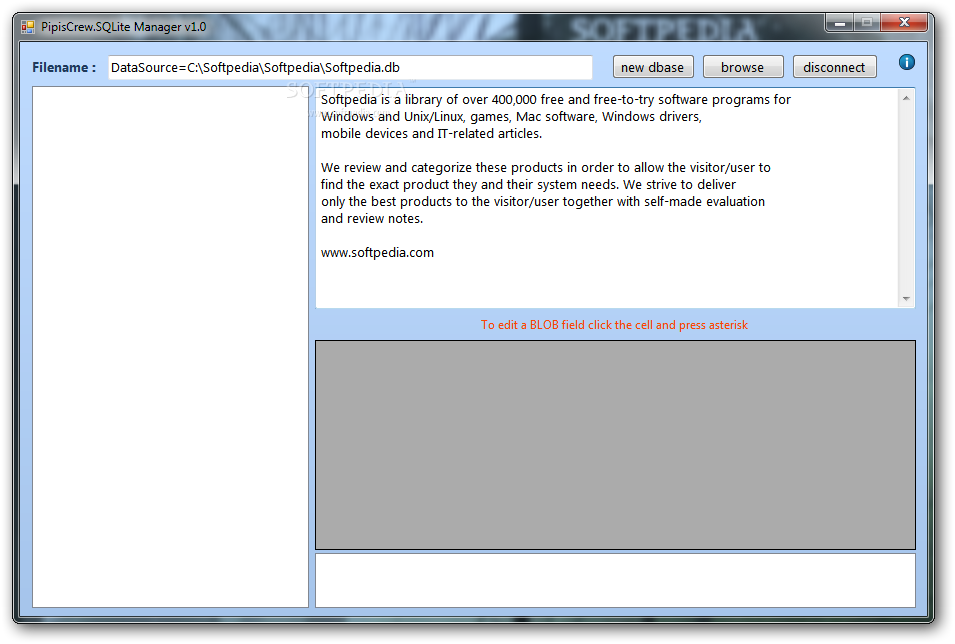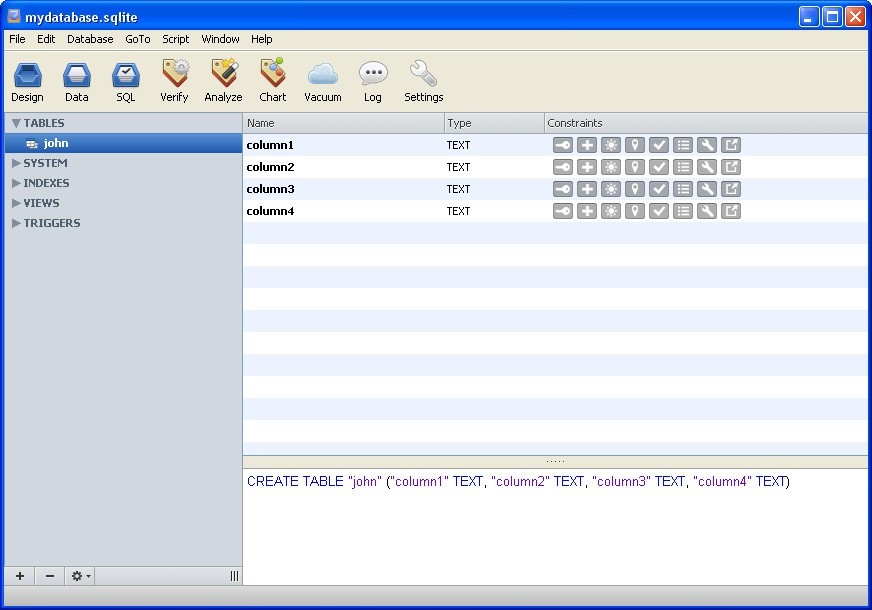

- #Using sqlitemanager how to#
- #Using sqlitemanager install#
- #Using sqlitemanager software#
- #Using sqlitemanager code#


This means that one can, for example, insert a string into a column defined as an integer.ĭ. It generally follows PostgreSQL syntax, but does not enforce type checking by default. Many programming languages have bindings to the SQLite library. It is the most widely deployed database engine, as it is used by several of the top web browsers, operating systems, mobile phones, and other embedded systems. As such, it belongs to the family of embedded databases.
#Using sqlitemanager software#
It is not a standalone app rather, it is a library that software developers embed in their apps. SQLite ( / ˌ ɛ s ˌ k juː ˌ ɛ l ˈ aɪ t/, / ˈ s iː k w ə ˌ l aɪ t/ ) is a database engine written in the C programming language. Submit your completed worksheet via by Friday at 5pm.sqlite. To learn more about SQL, check out some of the many tutorials online.
#Using sqlitemanager code#
For each one, include both your SQL code and the result. Write SQL statements to answer the remaining questions in your worksheet. Explore the tables via the "Structure" and "Browse" tabs. Answer #5 in your worksheet.ĭownload the Lab10.sqlite database and open it in DB Browser. The query then outputs a single row for each rev_host with its total number of visits. GROUP BY essentially means "for each." This query finds all rows with the same rev_host, and then calls the sum function to add up all their visit_count values. For example, this query shows which servers you visit most: One of the most interesting features of SQL is grouping and aggregation, which allows you to do more than just filter data. In this query, the output is first sorted by visit_count in descending order and then sorted by url in ascending order (for records that have the same visit_count). For example, you can sort the query results: SELECT * In addition to SELECT, FROM, and WHERE, there are many other clauses in SQL. Note how p.url in the SELECT clause makes it easy to tell what table that column comes from. Often developers use a single letter name for this purpose, like this: SELECT h.visit_type, h.visit_date, p.url

WHERE moz_ace_id = moz_places.idīecause the lumn syntax makes the code harder to read, SQL allows you to rename tables within the query. You need to use the table name in that case so that SQL can tell which column you want. Sometimes you will need to query two or more tables that have columns with the same name (e.g., id). Explore the other databases using this same process. Use the "Database Structure" and "Browse Data" tabs to view the contents of each table stored in these files. Open each file with DB Browser for SQLite. Navigate to your profile folder (see Part 0), and look for files like cookies.sqlite and places.sqlite. The issue is that the profile folder may be a hidden folder. If you are not able to locate, we will help on It is highly recommended you do this before class on Thursday. Note that finding the Firefox folder may take a bit of investigation. See the support article " where firefox stores user data" for more details. Will look something like fault or fault-release, where xxxxxxxx are random letters and numbers. If you can not find the folder at first, search for firefox within your finder type window. MacOS: ~/Library/Application Support/Firefox/Profiles/ The location of your profile folder depends on your operating system. In order to complete today's lab, you will need to open files that are SQLite databases found in your Firefox profile folder. View this lab with another web browser,e.g. After you have visited a few sites, exit out of Firefox. If you haven't usedįirefox before, navigate to a few web pages so you will have a history of visited sites.
#Using sqlitemanager install#
You need to install Firefox if not already on your computer. If you have not done so already, please install This lab assumes you have already worked through the SQL examples You may even learn a thing or two about yourself in the process.Īpply computing tools and techniques to solve problems at multiple levels of abstraction.Ĭollaborate with others to gain insight, interpret data, and solve problems using computation.
#Using sqlitemanager how to#
You may not have realized how many SQLite databases you have on your desktop, laptop, or phone,īut they are everywhere! In today's lab, you will learn how to access these files directlyĪnd unlock their true potential. It's embedded in Chrome and Firefox, iOS and Android,Īnd many other applications that people use every day. James Madison University, Fall 2022 Semesterĭatabase engine in the world.


 0 kommentar(er)
0 kommentar(er)
